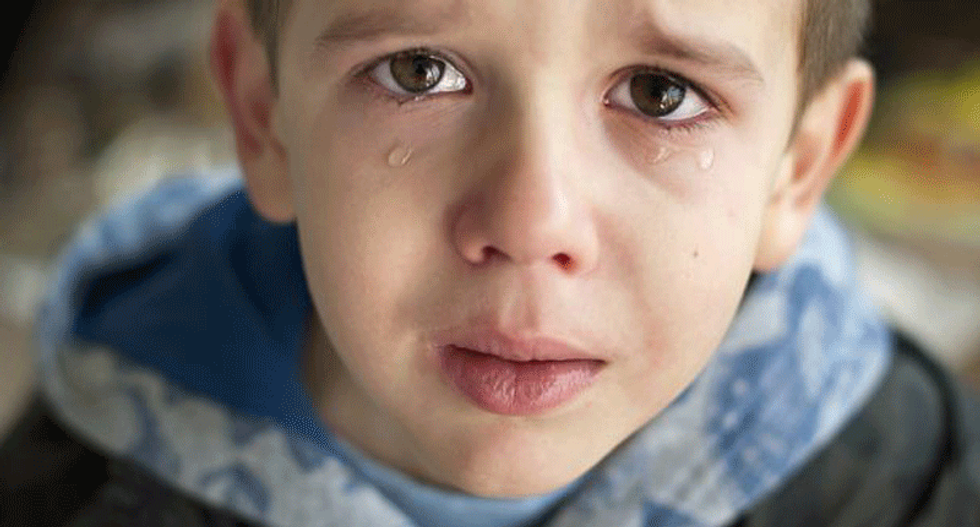
Being the child of an active-duty military member may present increased risks for violence, substance abuse and becoming the victim of bullying, a new study in the Journal of the American Medical Association Pediatrics finds.
The study adds to a growing body of research on the emotional stresses and resilience of service members’ children, conducted primarily in the past 14 years of America’s multiple military engagements.
The study’s principal researcher, who focuses his research on bullying, said he became interested in studying military members’ children when he heard stories about them being harassed in schools.
“I heard stories about war, and the military, and that’s different. It’s not just bullying,” said professor Ron Avi Astor in the University of Southern California’s social work department, a co-author on the study. “So, I started almost being ashamed as a civilian that I never saw this group, or understood them.”
“I really do think of them as an invisible diversity group, almost like 20 years ago we thought of lesbian and gay and transgender kids as a group.”
The study, Substance Abuse and Other Adverse Outcomes for Military-Connected Youth in California, analyzed a state-administered survey to study the children of military members. More than 630,000 California children in middle and high schools take the survey each year, answering questions about drug use, violence, bullying and students’ propensity to bring weapons to school.
Nearly every school district in California administered the survey. More than 54,000 children self-identified as children of American military members, and Astor’s analysis of the data found that military-connected children have increased rates of risky behavior almost across the board.
For example, 45% of military-connected children reported using alcohol in their lifetimes compared with 39% of their peers. Military-connected students reported being pushed, kicked, slapped or hit in school at a rate of 36%, almost 9% higher than their peers. They are also more like to carry guns or knives to school – 10% said they brought a gun to school while less than 5% of their peers did; 15% said they’d brought a knife to school, but less than 9% of their peers had done the same.
Astor attributes many of the increased risks to the nature of military family life, including multiple moves, worries about family members’ safety, and separation from parents.
Providing services for these children is complicated by the relative lack of data on the population. Only 14 states, according to the study, track whether school-aged children have an immediate family members in the military, and even fewer track veterans status.
In many settings, Astor said, he had to remind educators that there are still 1.4 million active-duty military members, many serving abroad, with most of their children in public schools.
“There’s many, many, many districts I go to, and people say ‘Oh, we don’t have any military or veterans kids.’ And sometimes they have military and veteran employees and staff members ... Suddenly everybody comes out and they have hundreds,” said Astor. “It’s almost like coming out of the closet in major cities.”
Estimates are that roughly 1 million school-aged children are so-called “military-connected”, or the immediate family of active-duty military members. When veterans status is included, that tally jumps to roughly 4 million.
That reflects less than 1% ( actually 0.4%) of the American population that has borne the burden of multiple military engagements since September 11, 2001.
“We have kids whose parents have had 13, 14 deployments, both the mom and the dad, and it seems like there’s almost no end in sight,” said Astor. “We have some cases where kids have been in six, seven, eight, in some cases 20 schools, going from base to base, country to country.”
Astor and advocacy groups such as the Military Child Education Coalition have developed resources for teachers of military-connected children . Astor said focusing on peer acceptance, tutoring and even making sure military children can get into after-school sports are important to closing risk gaps.
Even with the emergence of increasingly large population studies, however, the area of research remains controversial. Studies on the impacts of military deployment on children of military members is a relatively new area of study. Researchers said the most significant studies have been conducted in the past decade.
Further, some research has focused on the resilience of military families relative to the challenges they face, rather than risks that might be associated with service.
“They’re a population to watch for a lot of reasons, both in terms of resilience science, but in terms of being able to get them early intervention as quickly as possible,” said Anita Chandra, a senior policy researcher at Rand Corporation. Despite challenges however, Chandra said: “It’s sort of incredible that there’s that much ability to respond and recover.”
guardian.co.uk © Guardian News and Media 2015



